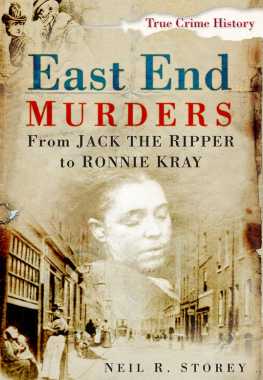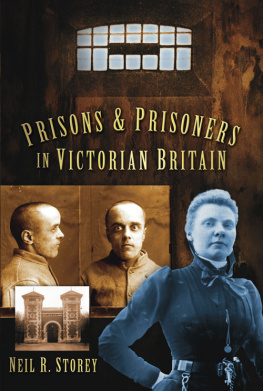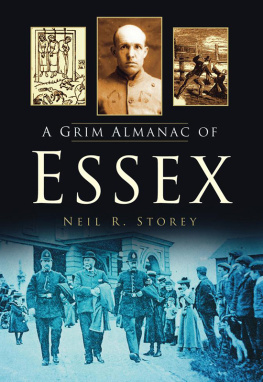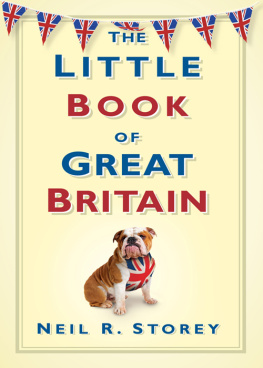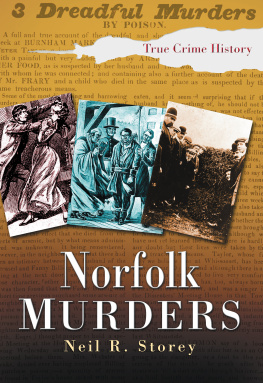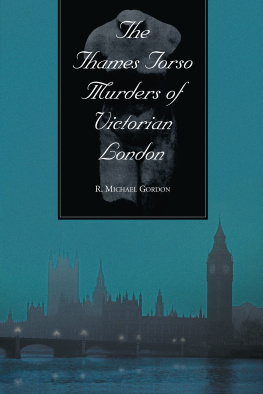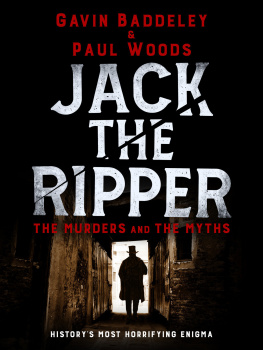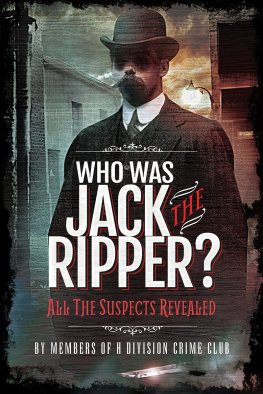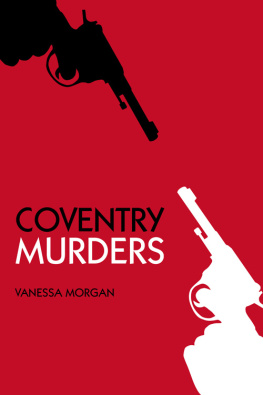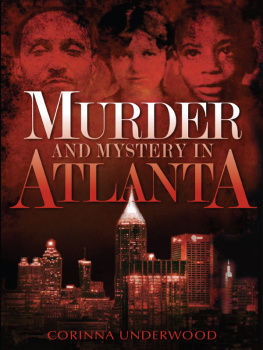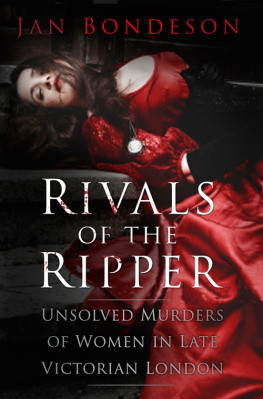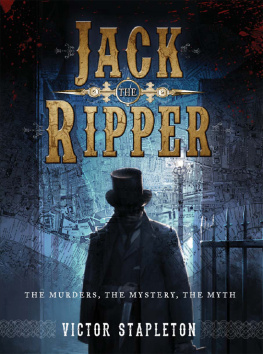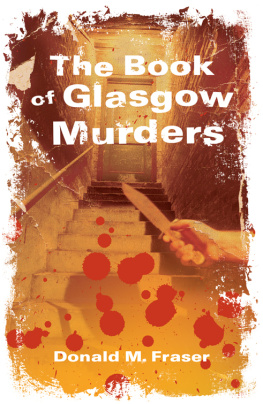East End
M URDERS
From J ACK THE R IPPER
to R ONNIE K RAY
East End
M URDERS
From J ACK THE R IPPER
to R ONNIE K RAY
N EIL R. S TOREY

First published 2008
The History Press
The Mill, Brimscombe Port
Stroud, Gloucestershire, GL 5 2 QG
www.thehistorypress.co.uk
Reprinted 2010, 2011, 2013
This ebook edition first published in 2013
All rights reserved
Neil R. Storey, 2008
The right of Neil R. Storey to be identified as the Author of this work has been asserted in accordance with the Copyright, Designs and Patents Act 1988.
This ebook is copyright material and must not be copied, reproduced, transferred, distributed, leased, licensed or publicly performed or used in any way except as specifically permitted in writing by the publishers, as allowed under the terms and
conditions under which it was purchased or as strictly permitted by applicable copyright law. Any unauthorised distribution or use of this text may be a direct infringement of the authors and publishers rights, and those responsible may be liable in law accordingly.
EPUB ISBN 978 0 7524 8445 7
Original typesetting by The History Press
CONTENTS
ACKNOWLEDGEMENTS
T he author would like to express his gratitude to the following: above all my thanks go again to Stewart P. Evans for his enduring friendship, knowledge and generosity. It would be remiss of me not to thank the wonderful Rosie too for her kind and thoughtful hospitality. Again it has been a pleasure and privilege to meet such fascinating people while indulging in some of the darkest research; I would particularly like to acknowledge Don Rumbelow for his advice on the chapter Blood on the Streets. I would also like to thank Tower Hamlets Local Studies Library, Whitechapel Library, Dr Stephen Cherry, Colin and Rachel Stonebridge, Les Bolland, Clifford Elmer Books, Philip Hutchinson, Robert Bookman Wright, Elaine Abel, Great Yarmouth Library and of course my dear family, beloved Molly and son Lawrence for their support and love for this author and his research.
INTRODUCTION
I n this volume I shall be taking you on a journey through the history of murder in the East End. Tragically murder, manslaughter, accidents and suicides have brought death to these streets on many occasions, be it wrought in the pursuit of crime perhaps a theft, a rape, a robbery gone wrong or perhaps during a drunken brawl; some of these crimes are bizarre, vengeful, gross, debauched, mad or just plain bad. All happened here. I do not attempt to retell every one of them but I have chosen what, I trust you will find, are a selection of the more fascinating cases, from the Regency period to the Swinging Sixties, every one of them infamous, some of them terrifying the populace in their day and all of them with some curious aspects and twists of fate or horror to intrigue the modern reader.
So often while I pursue and investigate the stories of crime in the nineteenth and early twentieth century I would like to be able to travel back in time and ask a question, examine the site for myself before time changed it beyond recall and talk to the investigating officers. When considered in contrast to the long scale of history these cases are often, frustratingly, fairly recent. We can be fairly certain visits were made by criminologists in the days, years or decades after the crimes while events were still in living memory, but these visits are seldom recorded but I have found one.
Come back with me to 19 April 1905, when a young barrister named S. Ingleby Oddie met up with his friend Dr Gordon Brown at the Police Hospital, Bishopgate. Oddie was allowed to bring some friends with him, and the entire party consisted of Sir Arthur Conan Doyle, Professor Churton Collins, Harry Brodribb H.B. Irving, Dr Crosse and three detectives from the City of London Police. Thus were gathered together some of the finest crime writers and medical experts of their day who then embarked upon a tour of the Jack the Ripper murder sites led by Dr Brown, the man who had conducted the post-mortem on Catherine Eddowes. He also examined the body of Alice Mackenzie, and took part in the investigation into the Pinchin Street torso, accompanied by detectives well versed in the case. Tragically one can only imagine the conversation as the group made their journey around the murder sites little changed since the blood first ran across the cobbles in 1888; however, in his book Inquest (1941), Oddie did record his impressions of the places they visited and undoubtedly reflected some the comments and impressions shared by the other members of the group:
The scenes of the murders all presented one common characteristic. They were all dark and obscure and secret as possible. Nearly all of them, however, were evidently selected as being places from which it would be easy to slip away unobserved. In Bucks Row for example there were easy alternative exits. In Mitre Square there were no less than five. In Hanbury Street, the scene was the back yard of a common lodging-house, approached by a passage giving a ready exit into any one of three neighbouring backyards, and thence into the street Millers Court in Dorset Street seemed to be a trap, yet one had to remember that in this case the Ripper went into the victims own single room instead of conducting his operations, as in other cases, in the open street. This latter place was a dismal hole seen on a dark, wet, gloomy afternoon. It consisted of one very small room, with a very small window, a fire, a chair and a bed. It was sombre and sinister, unwholesome and depressing, and was approached by a single doorstep from a grimy covered passage leading from Dorset Street into a courtyard. Indeed, it would be just the sort of mysterious and foul den in which one would imagine dark, unspeakable deeds would be done. Yet it was only a stones throw from the busy Whitechapel Road. It was here Mary Kelly was done to death I saw the police photograph of the mass of human flesh which had once been Mary Kelly, and let it suffice for me to say that in my twenty-seven years as a London Coroner I have seen many gruesome sights, but for sheer horror this surpasses anything I ever set eyes on.
It was to be almost seventy-five years before that same dread picture was seen by the British public for the first time. In this book that now-infamous photograph is reproduced and accompanied by the transcriptions of the post-mortem examinations of the bodies of the other victims. When reading these reports it is hardly surprising that these killings stood out as different, even to East End residents and police who had become hardened to death and murder they were more explicitly horrible than anything they had ever encountered before. Even in this modern world of criminal profiling so many questions remain unanswered: what was the mental state of Jack the Ripper, for example? Was he truly insane, or was he pretending to be mad? Was he schizophrenic, or a living embodiment of Jekyll and Hyde (a character portrayed on stage by American actor Richard Mansfield at the Lyceum at the time of the murders)? The depiction certainly pricked the darker corners of concern in the minds of upstanding members of Victorian society, perhaps particularly among those who were outwardly respectable but secretly debauched and violent behind closed doors, or at least away from the gaze of decent people perhaps in the shadows of the East End.
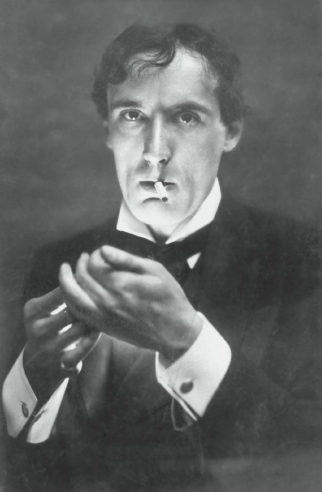
Harry Brodribb H.B. Irving actor and notable crime writer.
What intrigues me is to consider if Jack knew the dark corners of the East End intimately. Could he stalk the streets looking for victims in the most vulnerable places known to him? Did he plan his attacks knowing the escape routes he would use? Or were the warren of back streets and shadowy corners of the East End merely a convenient place to carry out his nefarious deeds, leaving him to get away more through luck than judgement?
Next page
